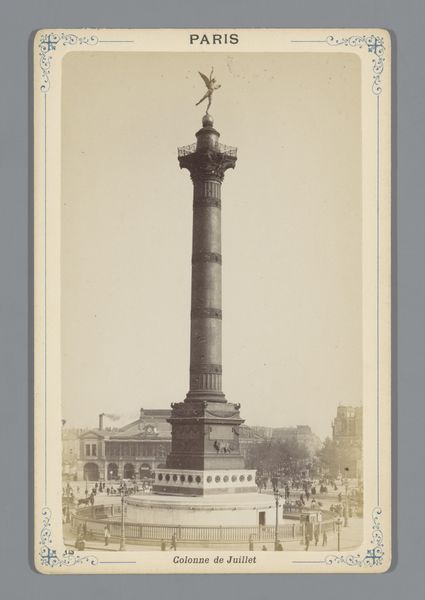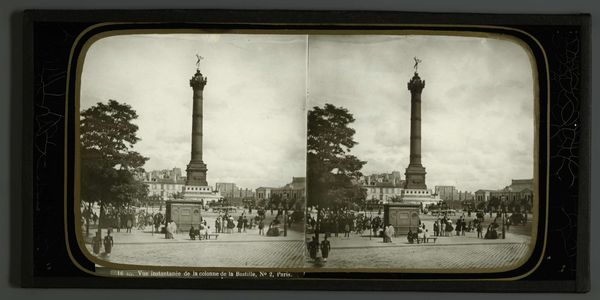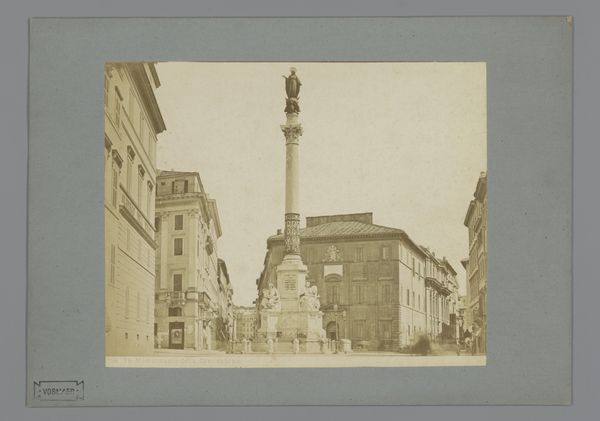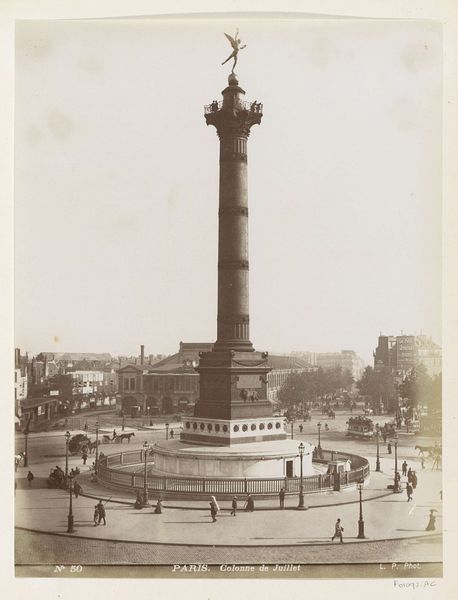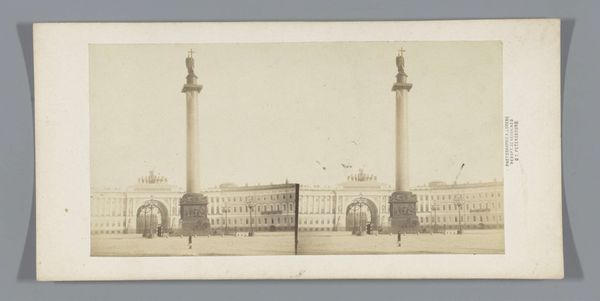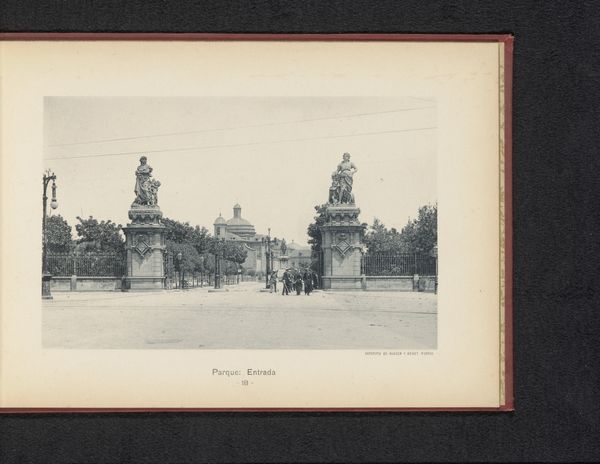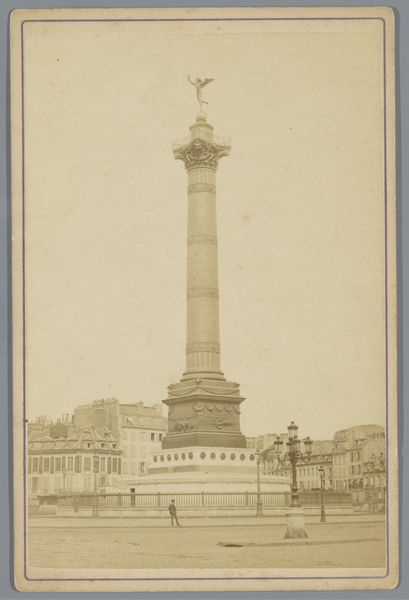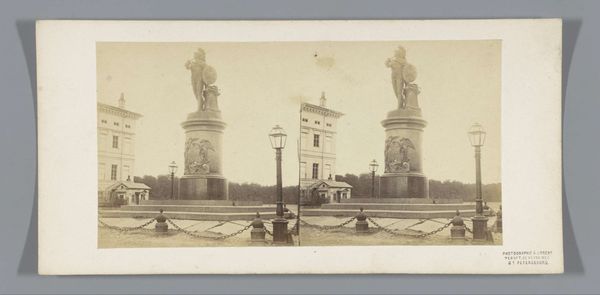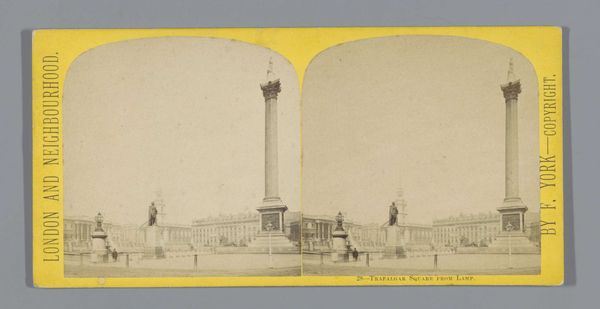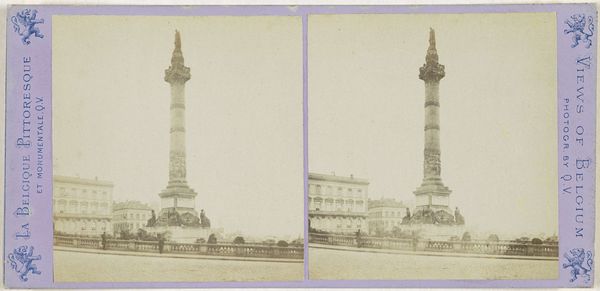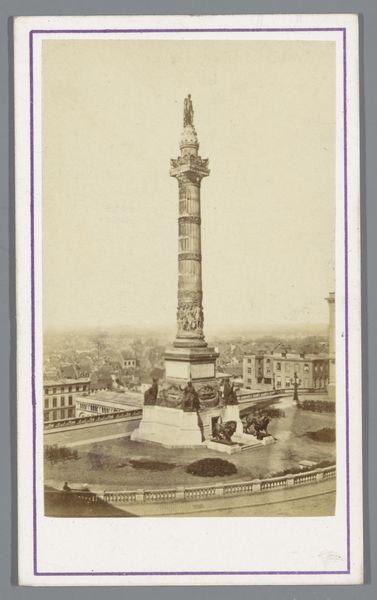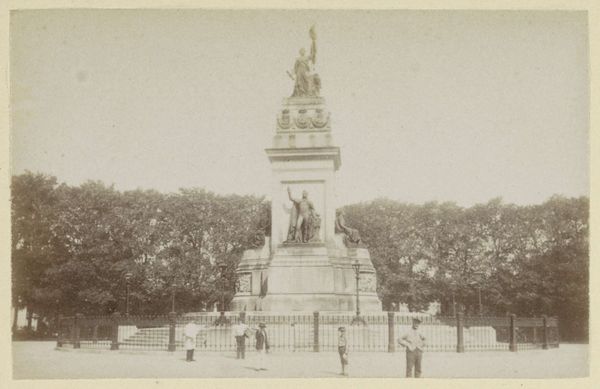
Gezicht op de Pont de Fragnée, de ingang van de Wereldtentoonstelling van 1905 in Luik 1905
0:00
0:00
print, photography
#
pictorialism
# print
#
landscape
#
photography
#
cityscape
Dimensions: height 109 mm, width 169 mm
Copyright: Rijks Museum: Open Domain
Editor: This print, "View of the Pont de Fragnée, the entrance to the 1905 World's Fair in Liège," shows an impressive architectural scene. The two large columns topped with statues dominate the composition, framing the distant fair buildings. It feels like a deliberate attempt to convey power and progress. How do you interpret this work, especially given the context of a World's Fair? Curator: I see this image as a potent visual statement about the ambitions and anxieties of the early 20th century. World's Fairs were inherently about showcasing national power, technological advancement and projecting particular narratives around progress and civilization, weren't they? These columns, standing like gatekeepers, not only welcome visitors but also control and frame their gaze. Editor: So, you see a tension between welcome and control? Curator: Absolutely. Consider what's included and what's excluded. Who is this "progress" for? Who is allowed through these gates? The carefully constructed vista promotes a specific vision of modernity. Also, pictorialism in photography often served to idealize and aestheticize the urban landscape, masking some of the social realities. Editor: That makes me think about who is present in the image: mostly men in suits, reinforcing that dominant perspective. Curator: Precisely. It encourages us to consider who has agency in shaping this narrative. What are the social, economic, and political structures that enable this spectacle of progress to occur? This print isn't just a picture; it’s a loaded document, inviting us to dissect its visual rhetoric and its social implications. Editor: That's given me a whole new way to look at what I initially saw as a simple landscape. Thanks! Curator: My pleasure. Art is at its best when it invites us to ask critical questions about the world around us.
Comments
No comments
Be the first to comment and join the conversation on the ultimate creative platform.
